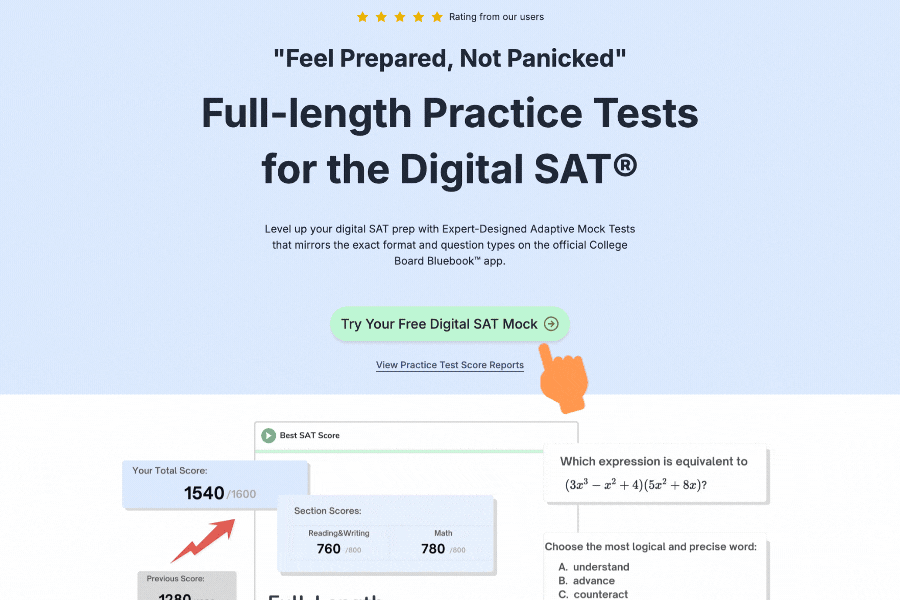A linear equation in two variables is a type of equation that expresses a straight-line relationship between two variables: x and y. The graph of this equation will always form a straight line.
📚 Two Common Form of a linear equation in two variables:
-
Slope-Intercept Form (y=mx+b)
- m: The slope of the line (rate of change).
- b: The y-intercept (where the line crosses the y-axis).
Example: y=−x+3, where m=−1 and b=3.
-
Standard Form (Ax+By=C)
- The standard form rearranges everything so that x and y are on one side of the equation, written as Ax+By=C, where A, B, and C are constants.
- Example: 3x+4y=12.
The SAT frequently uses the standard form, so make sure you're comfortable converting between these two forms.
📚 The Relationship Between the Two Variables (x and y):
The key idea is that there's a connection between x and y:
- Changing the value of x will directly affect the value of y according to the equation.
- Example: If the equation is y=21x+1, increasing x by 1 increases y by 21x (because the slope m=21).
A simple analogy:
Think of x as the number of hours worked and y as your paycheck. If you earn $15 per hour, the relationship between hours (x) and pay (y) is linear. For example, you could write the equation as y=15x. Working more hours directly increases your paycheck.
📚 Key Concepts: Slope, x-Intercept, and y-Intercept
(1) Slope (m): The Rate of Change
The slope m describes how steep the line is. Mathematically, it's:
m=runrise=change in xchange in y
- Positive slope (m>0): The line goes upward from left to right.
- Negative slope (m<0): The line goes downward from left to right.
- Zero slope (m=0): A horizontal line (no change in y).
Example: If m=2, it means that for every 1 unit increase in x, y increases by 2.
(2) x-Intercept: Where the line crosses the x-axis
The x-intercept is the point where y=0. Solve the equation for x by setting y=0.
- Example: In the equation y=2x+6, set y=0:
0=2x+6 ⟹ x=−3
So, the x-intercept is (−3,0).
(3) y-Intercept: Where the line crosses the y-axis
The y-intercept is the point where x=0.
-
Example: In the equation y=2x+6, set x=0:
y=2(0)+6=6
So, the y-intercept is (0,6).
